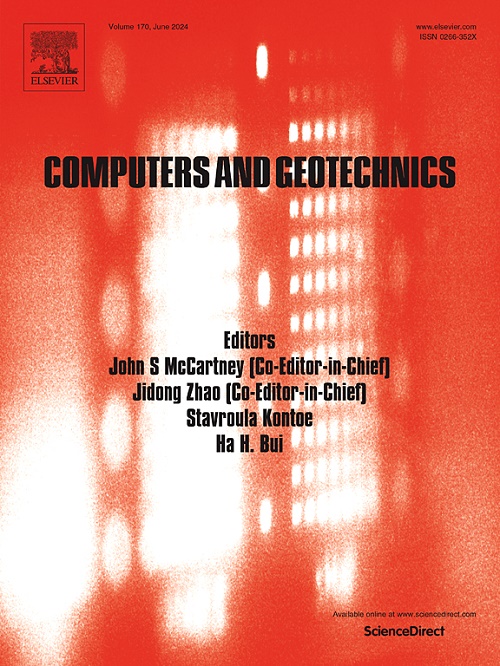An algorithm for modeling 2D irregular columnar jointed rock masses
IF 5.3
1区 工程技术
Q1 COMPUTER SCIENCE, INTERDISCIPLINARY APPLICATIONS
引用次数: 0
Abstract
Field investigations show that the cross-section of irregular columnar jointed rock mass (ICJRM) is composed of a variety of polygon mosaics where pentagons and hexagons account for the majority. A VSRD (Voronoi-based Seed Random Displacement) algorithm that can precisely control the proportions of pentagons and hexagons is proposed to model the cross section of ICJRMs. The algorithm consists of generating an initial seed set to produce a Voronoi diagram with special pentagon tessellation, transforming special pentagons into hexagons and other polygons through moving some initial seeds by a random displacement, and correcting the average equivalent diameter of the columns. Then the VSRD algorithm is employed to model five famous ICJRMs, and the geometric properties of the models are compared with field investigations of these ICJRMs. The results show that the proportions of pentagon and hexagon in the models are consistent with field investigations, and the consistency of the average equivalent diameter of the columns between models and natural ICJRMs can be achieved by introducing a correction factor, by which the reliability of VSRD algorithm is verified. Additionally, the 2D ICJRM models generated by VSRD algorithm can provide a new perspective for exploring the mechanical and hydraulic properties of ICJRMs through physical and numerical experiments.
求助全文
约1分钟内获得全文
求助全文
来源期刊

Computers and Geotechnics
地学-地球科学综合
CiteScore
9.10
自引率
15.10%
发文量
438
审稿时长
45 days
期刊介绍:
The use of computers is firmly established in geotechnical engineering and continues to grow rapidly in both engineering practice and academe. The development of advanced numerical techniques and constitutive modeling, in conjunction with rapid developments in computer hardware, enables problems to be tackled that were unthinkable even a few years ago. Computers and Geotechnics provides an up-to-date reference for engineers and researchers engaged in computer aided analysis and research in geotechnical engineering. The journal is intended for an expeditious dissemination of advanced computer applications across a broad range of geotechnical topics. Contributions on advances in numerical algorithms, computer implementation of new constitutive models and probabilistic methods are especially encouraged.
 求助内容:
求助内容: 应助结果提醒方式:
应助结果提醒方式:


